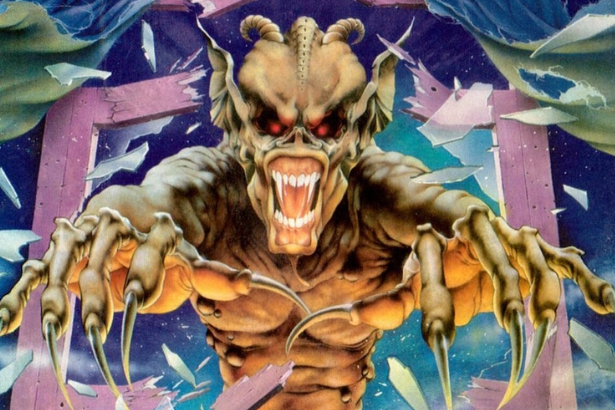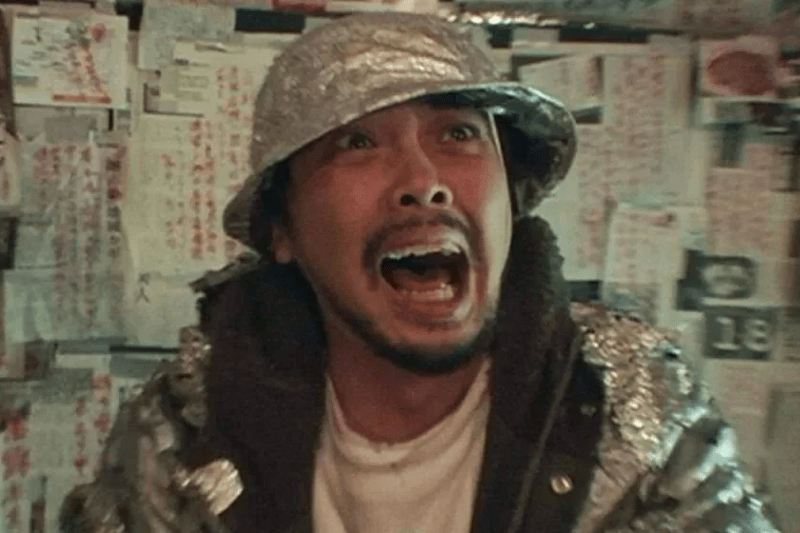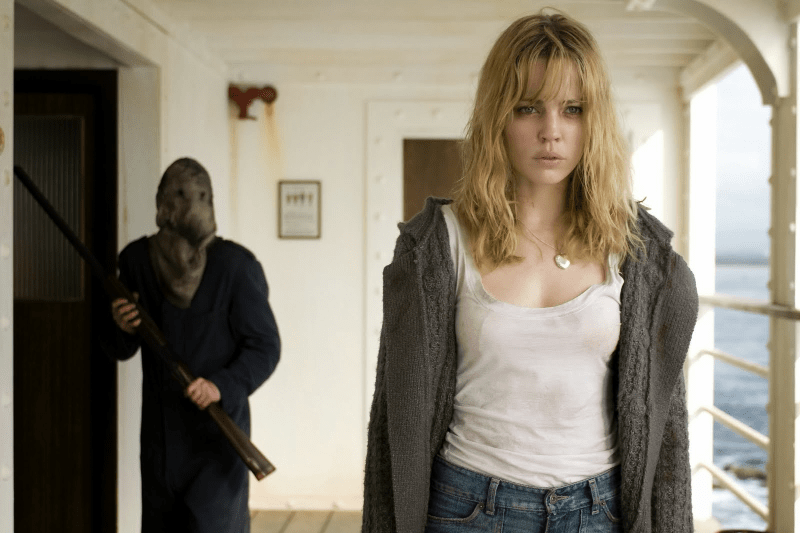Through its lens of extreme French occultism, Kim Chapiron’s Sheitan (2006) examines the destructive and degenerate force of the straight, white male body. As a desecrated spectacle, the violent dissolution of white heteronormativity is positioned against a demonic and spoilt countryside. But the film’s truest wonderment is owed to the fact that it is set during Christmas. This allows for a perversion of festive sacrilege as the hetero-nuclear family is destabilized and queered.
In coining the term “New French Extremity” in 2004, film critic James Quandt had detected a movement that displayed burgeoning extremism in French cinema. Films like Criminal Lovers (1999), High Tension (2003), Calvaire (2004), Twentynine Palms (2004), and Sheitan (2006) dissected queerness through vicious displays of nihilism and a confrontational national pessimism.
Yet, in violating certain idyllic notions of the natural world, these films also qualify as queer anti-pastorals. The term—introduced and conceptualized by Cameron Clark in the essay, “Grief, ecocritical negativity, and the queer anti-pastoral”—reconfigures pastoral traditions and queer ecocinema towards a destabilizing view of homosexuality in nature. As Clark notes, the presence of (mostly) gay men in pastoral modes holds a historical prevalence. In contemporary cinema, variations are seen in the films Brokeback Mountain (2005), God’s Own Country (2017), Moonlight (2016) and Call Me By Your Name (2018).
In contrast and through unsettling negativism, the queer anti-pastoral presents “inhospitable, and discomforting representations of queerness within the natural world.” Consider how Sheitan collapses the inherent romanticism of the French wilderness. Instead, insidious violence, incest and predatory perversion effectively contaminate these pastoral traditions of gay men in nature.
It’s through this queered abjection that Sheitan desecrates not just any pastoral landscape but one holding significant religious references to the Garden of Eden and the holy nativity. Eve offers apples initiating a threesome; the three wise men are debased club kids; a snake coils around Joseph’s sinful breast; a child is born through incest. This is not the divine, Christian land that Joseph tends to. Instead, festive sacrilege curdles the shepherd's pastures and Western Christian patriarchy is thoroughly degraded before being dismantled.
Sheitan follows four debauched friends who ditch a Parisian nightclub to spend Christmas at the isolated country house of new acquaintance Eve (Roxane Mesquida, Fat Girl.) Upon arrival, the city-dwellers are introduced to the manor’s peculiar and genial groundskeeper, Joseph (Vincent Cassel), as wife/sister Marie (also Cassel) observes from afar. The festivities grow increasingly menacing as Joseph unleashes his demonic intentions, focusing particularly on the group’s wanton loner Bart (Olivier Barthélémy).
As David Greven notes in his book Ghost Faces: Hollywood and Post-Millennial Masculinity, during the 2000s, “The approach taken to the depiction of masculinity [...] oscillates between the voyeuristic (the investigation of and the focus on the male body) and the fetishistic (the obsession with male faces).” This is exhibited through Joseph’s overt and lecherous objectification of Bart from the onset. Through his taunting of and fixation on the city-dweller, Joseph evokes the oft misplaced cruelty of closeted sexuality. In this sense, Joseph can easily be understood as a grotesque caricature of the isolated homosexual figure repressed by the religious zealotry upheld by conservative, “backwoods” communities.
For example, note the scene at the hot springs. Joseph and Bart’s bare torsos are both wet and towering on top of the other. Through their teetering, erect form, they reveal a homoerotic interplay of desire/repression; initiated by Joseph, repelled by Bart. This image reproduces what Greven describes as “the more common straight top/gay bottom scenario” seen in porn. Here, Joseph's desire for Bart is unmistakably exposed, spilling over like the springs themselves; a hellish basin of mostly male bodies.
As such, homoeroticism in Sheitan inverts the trope of the victimized woman, redirecting the sexualized, predatory male gaze onto a male victim. This speaks to Greven’s argument that horror cinema of this era tended to reposition men as both perpetrators and victim(s), illustrated in films like Hostel (2006), Saw (2004) and further detected in Calvaire, Twentynine Palms, and Criminal Lovers. In presenting this male-on-male configuration, these films demonstrate the straight, white male’s descent into “‘feminine’ victimization and passivity.”
With his companions coupled, Bart remains susceptible to Joseph’s predation. “Looks like your only hope is Joseph,” his friend Thaï (Nico Le Phat Tan) teases, later encouraging Bart to “seal the deal.” Note how the spaces in which Bart is propositioned speak to the film’s larger queer anti-pastoral impulses: the meadow, the greenhouse, the hot springs. Traditionally coded as enclaves for gay reprieve and pleasure, these natural spaces are unsettled through Joseph’s Satanic intentions for Bart (the sacrificial male).
Greven’s analysis of post-millennial “torture/porn” aligns similarities to gay porn tropes. Sheitan exhibits these predilections as the fetishized straight male body becomes a site of homoerotic voyeurism. As Joseph vies to be both the bearer and recipient of the homoerotic gaze, his objectification of Bart centers here. Upon introduction Joseph offers to show Bart around the property, encouraging him to visually trespass his prized, vast terrain. Later, at the hot springs, after a townsperson muddies Bart’s eyes with sediment, Joseph becomes fixated on remedying his obstructed gaze. This preoccupation ultimately culminates with the carving out of Bart’s eyes. It’s a penetrative violation of the white, straight male’s orifices that speaks to Greven's theories on post-millennial cinema’s intent to “disassemble this body and make it available for consumption on multiple levels.”
As such, the film establishes straight, white masculinity as a site of fetishism, gay panic and dysfunctional gender trouble. Here, bodies are destined to disrupt the boundaries established by social norms, and none accomplish this more than Cassel’s.
The film satirizes the birth of Christ through the macabre comedy of Satanic impregnation. Consider how the familial matriarch, Marie, is played by Cassel in ample, gestating drag—and the religious significance both names hold. The nativity’s biblical, holy trinity is, thus, masculinized through homosocial and gendered transgressions.
By way of eviscerating gender binaries and in their inherent association with the fouled countryside, Joseph and Marie become queer(ed) sheitans imbued with new mythical significance. The word “Sheitan'' (Shayțān) in Arabic loosely translates to mean “Satan” or “devils.” Originating from Islamic mythology, sheitans are known as demonic manifestations of the jinn (spirits). Revelling in filth, excrement and disease, they are hoofed and can present as either gender.
The pair trot through muddied farmland and dilapidated corridors, as though hoofed themselves, with curdled “shit-eating” grins. Marie, a deranged doll-maker, plucks eyes and sews raw viscera while Joseph cracks skulls, lobotomizes, and cleaves skin with a twisted hook. Through voyeuristic tendencies, they present as gender-disruptive tricksters hell-bent on sacrilege, deviance and an unsettling sense of familial dynamics within their pious rural setting.
In the film’s climax of drag, spectacle, and abject physicality, Joseph’s manifested repression splatters the dirt-crusted linoleum in the form of Marie’s embryonic vellum. The trappings of compulsory heterosexuality have bred, quite literally, the antichrist.
Sheitan’s use of festive sacrilege spectacularizes the non-conforming body and its disruption of boundaries. Like nesting dolls, bodies unravel inside of other bodies, merely born to confront, and then desecrate, their physical limitations. In this sense, Sheitan becomes an exercise in excess.
In its demonizing of normative embodiment, Sheitan refuses the male body as a static, functional and straight form. This crisis of white, hetero-governed masculinity offers a prescient interrogation on urbanized gay panic positioned against rural depravity. (As we see in the film’s opening through a derogatory slur, the city is no gay haven, either.) Yet, this fouling of the pastoral landscape allows homoeroticism the space to run amok and for hetero disavowal to be ritualized—christened even—amongst the rural sprawl of pastures.







